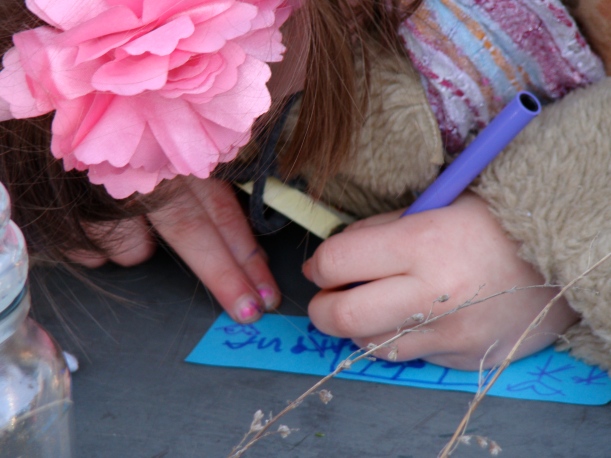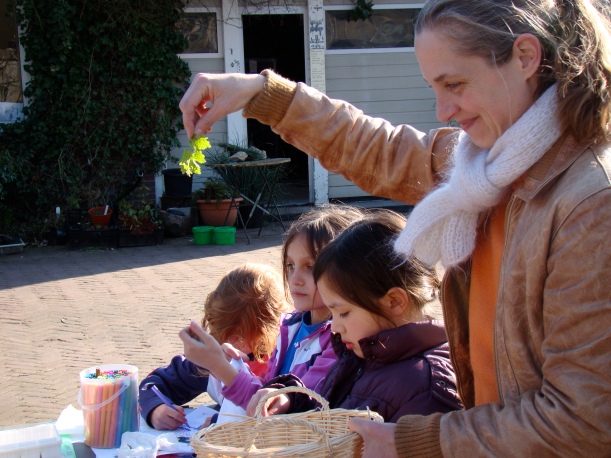When I see young people moodily pulling leaves off a tree as they walk by, or tearing a flower to bits, what I see is an instinctual – though unconcious – act of herbal self-healing. Just as we clench our fists when angry (this is a hand-mudra, used in yoga to deal with anger) or bang our fists to our heads with frustration over a problem (in yoga, pressure on the forehead activates the frontal lobe, dealing with short-term memory and problem-solving), so tearing up leaves or flowers releases chemical components of the plant and surround the person with its healing energy. These are simply my thoughts and intuitions… how do YOU feel about this?
Tag Archives: herbal medicine
Wild Weed Wisdom – Scrapbooked!
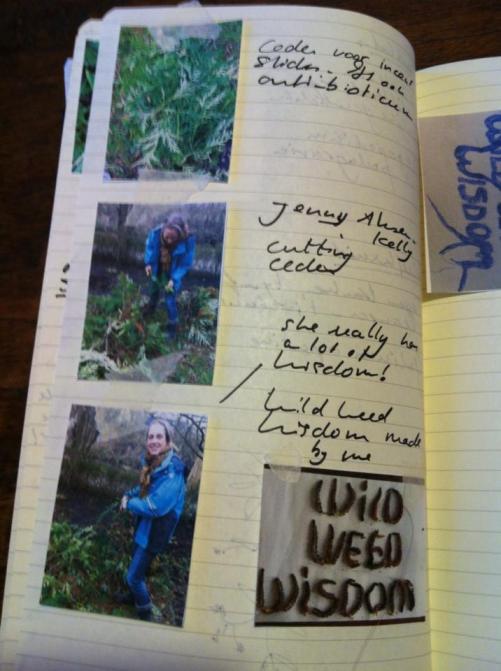
 It’s quite an honour to be included in the herbal scrapbook of Leoniek Bontje, who apprentices with me. Leoniek is not only a dedicated student of wild medicinal plants, but she’s also an excellent artist.
It’s quite an honour to be included in the herbal scrapbook of Leoniek Bontje, who apprentices with me. Leoniek is not only a dedicated student of wild medicinal plants, but she’s also an excellent artist.
You don’t need any special skills, however, to make your own herbal scrapbook, and I would urge you to start on one. It is a real way to learn, I mean really learn, about the plants.
Sketching the plants will help your brain organize all the small details that are so important for identification. It will train your eye.
Leave your Smartphone at home for your next walk. Bring instead, your guide book, scrapbook, a roll of tape and a pencil. Tape small samples into your book. Pay attention to the details. Is the leaf hairy on the underside? Is it leathery or like a thin, transparent skin? Is the stem hollow, milky, ridged or prickly? Ask these questions, and many more, then answer them in your notes. You’ll be amazed at how quickly you learn, and how incredibly satisfying it is to have your very own scrapbook.
Happy hunting!
Greater Celandine Buds
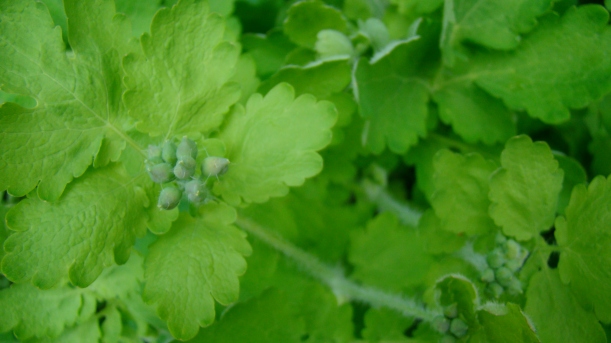
In a day or so, the yellow brightness of the flowers will burst forth and make this plant quite easy to spot from a distance. Still, sometime it’s nice to identify a plant before it blooms, while it is simply pure potential. At a later date, I’ll talk more about this plant – or just come and join me for a Wild Weed Walk…
Feeling Grounded
I recently posted an article about picking roots – in this case, Burdock Root – and the option of buying the same root from Japanese or Korean shops (where Burdock is known as Gobo) instead of going to the hassle of digging them up.
Truth be told, I enjoy the ease of buying Burdock, but I also really LIKE to dig them up!!
Here’s what I foraged for last autumn. That’s the best time to harvest, as the goodness gathers there in preparation for over-wintering.
I use Burdock as a grounding food and tincture, along with all it’s other supportive functions – cleansing the liver and therefore, the blood. Which keeps the skin clear and helps skin conditions such as psoriasis and eczema.
Burdock Root

Digging up wild roots in many parts of Great Britain, Europe, and North America is against the law. One must get special permission from park authorities or the land-owner, unless you are digging on your own property. This is an ethical question I sometimes struggle with: in the case when a plant is considered a nuisance, a common weed, wouldn’t it be better for a forager like myself to remove this plant and make good use of it? As opposed to prevelant ‘weed management’, where the plant is removed anyway, and often with harmful pesticides? I know of numerous instances where I respected the law, only to see that the roots I’d have loved to harvest had been dug up en masse by park authorities…
I do understand that we also can’t have everyone digging up as many roots as they like!
Pretty tricky.
Anyway, the delicious burdock roots shown in this photo came from just down the street, from the Korean “Toko” shop; where gobo (its Asian name) is sold for use in traditional Korean and Japanese dishes. If you’ve eaten vegetarian maki, you’ve probably eaten gobo (牛蒡 or ごぼう). Korean use the term “u-eong” (우엉) or “tong u-eong” (통우엉), meaning, “whole burdock”. If you have never tried this before, head over to your local shop and pick some up.
The cultivated roots of burdock can grow about one metre long and two centimetres across, though I believe the wild, first-year burdock would have more medicinal properties than a cultivated one. Burdock root is crisp with a sweet, mild, and pungent flavour and earthy smell. Its helpful to soak it, julienned or shredded, in water for five to ten minutes to keep it from turning grayish-brown once the outer layer has been removed (remove it as one would peel a carrot).
In macrobiotic cooking, burdock root is considered healing, warming, and calming. It helps one think more clearly and stay even-tempered. It is an excellent jet-lag remedy.
Burdock Root (Articum lappa) is great added to soups, stews, and stir-fries. I add it to my ‘almost-famous’ Boston Baked Beans dish. I will post this recipe at a later date and link it to this page. I’ll also continue to add photos of burdock in various stages of growth to help you locate your own; as well as describe all the other amazing things burdock has to offer.
Related articles
- Sweet Potato Ginger Carrot Stew (cookingintuitive.com)
- an Herbalist’s Root Beer (northhollowbotanicals.wordpress.com)

This gallery contains 0 photos
Follow That Weed!
I’ve been out taking heaps of photos the past few weeks, aiming to capture the first signs of Spring, and I decided to follow them through all four seasons as well. So, this year I’ll be following as many plants as I can manage, so we can practice identifying them in all stages of development. It can be really helpful – and immensely rewarding – when you discover you can identify plants even before they flower, or from the dried stalk.
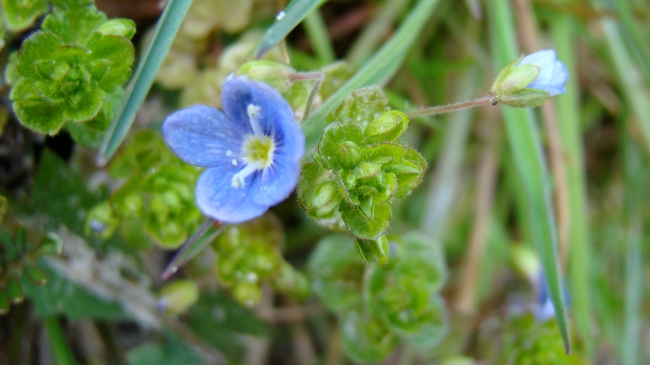
This tiny little flower is actually a power-house of healing and has many healing properties, but especially is known for it’s ability to help with digestion, and to remove plaque and mucus from the blood vessels and intestines. Good for cholesteral.
There is so much more to say, so I will definitely be coming back with more information… suffice to say, keep your eyes open for this beauty and get down on your knees for a better look! This is a really small flower!!!
As I go, I’ll be adding more information about special properties of the plant, recipes, habitat and so on. Sometimes I might just post a photograph. At the moment, teaching small groups or one-to-one is my preferred way of sharing… If you can make it to a weed walk, workshop, or event, that’s the best way – get down on your knees to really look at the plant; smell it, smell the soil in which it grows, feel the leaves and stem, perhaps draw it, meditate by it, and, if safe to do so, taste it. This is how one becomes friends with our plant allies.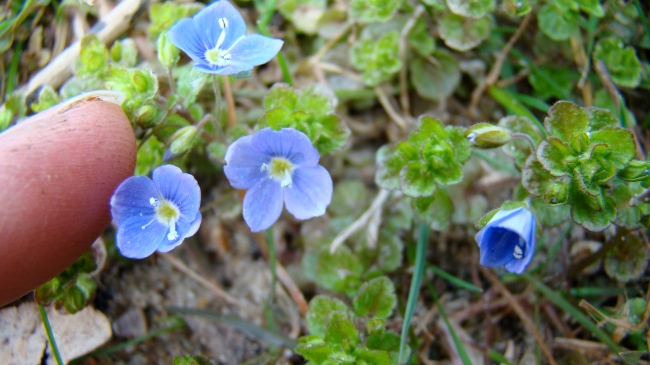
Remember, if you do plan to forage for food, herbal medicine, or any other wild plant product, please follow the rules of safety, respect, responsibility and ethical harvesting and use of these plants. See here for some guidelines.
Herbal Sleep & Dream Pillows for Wild Weed Kids


Dream and Sleep Pillows usually give off a wonderful aroma of sweet and pungent herbs, such as lavender, cedar, chamomile, rose, and anise. Some of the other herbs are not quite so aromatic, but still offer benefits to sleep and dreaming – motherwort and hops. Max (aged 6) is getting a good dose of some Rosemary from her basket! To learn about how to make your own Sleep or Dream Pillow, click here.

We all put special notes, words and/or drawings into our pillows to personalize them and fill them with intent. The children LOVED this concept, and dove into the task of carefully customizing their pillow. Here is 5-year-old Anika with her drawing.

In the bottle you can see dried hops (sleep enhancer), in the background is a bottle of Calendula (gentle, loving dreams) and the loose, dried herb is mugwort (enhanced dreams). Children don’t really need this herb to enhance dreams, but I found such a nice patch, that had been out all winter, and was therefore less potent, I thought it would be nice to introduce it. Plus, it is great for kids to see the herb on the stalk, and pull the dried leaves of themselves.
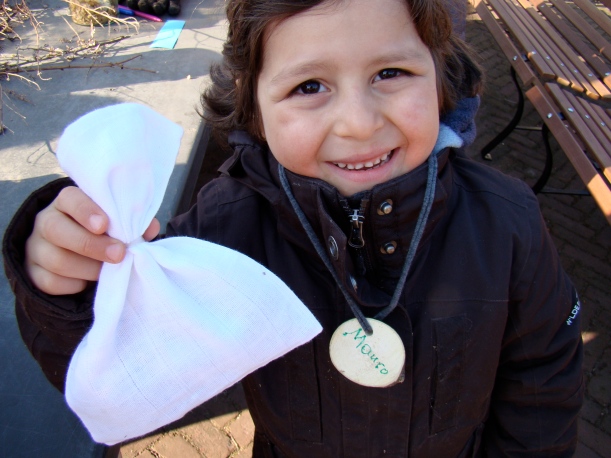
There was some Motherwort (Cardiaca leonorus) growing on-site, and I also had some dried with me… I explained to the children how, aside from the traditional use as a heart-remedy, Motherwort also bathed you in “Mother’s Love” when you felt lonely, angry, jealous, or just plain sad. Or just when you wanted a hug, and your Mommy couldn’t be there. All the kids said they’d like this, especially because they wished they could snuggle with their Mom’s all night long. Marou’s pillow was made with great care, full of all the loving herbs – Motherwort, Rose, Chamomile and Calendula, especially.

We first had a tour of some of the living herbs growing at the VU Hortus – Rosemary, Sage, Motherwort, Cedar, Birch… and then added some extra I provided.
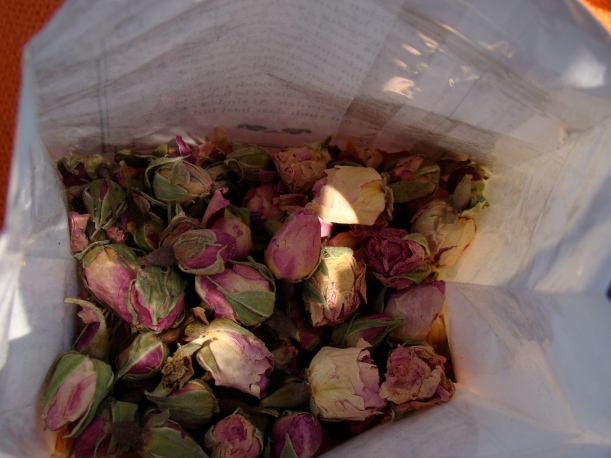
This bag of Rosebuds made each child sigh with happiness, and close their eyes with joy. Can you imagine how they may help with happy, loving dreams? (They also taste divine when added to a pot of black tea)
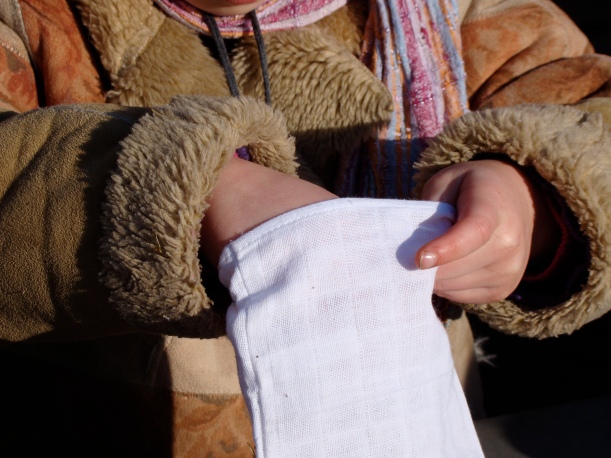
Another good look at the bags (bath-linen mittens) we used. Easy to make yourself as well, with old cloth hankys, for example.
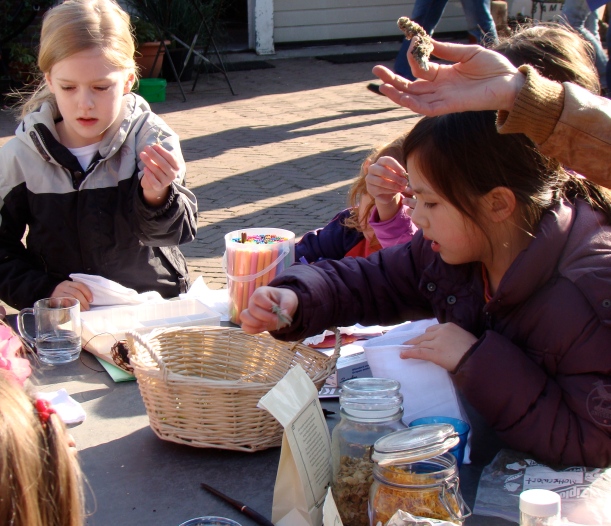
We also added Mullein, to help keep nightmares at bay and have nice dreams. The kids loved the idea of herbs to help with that. Here, I am holding some dried flower-head; there was also some fresh Mullein growing on-site that we discovered and talked about.

The children helped harvest Rosemary leaves and we put them in the pillow – also to ward off bad dreams – and of course, we all ate some!
This gallery contains 39 photos
Wild in the City – Day One, Part II
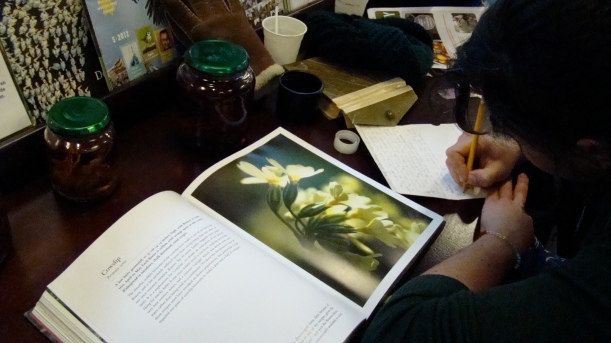
Around 2:30 we arrived at the Information Centre of the Amsterdamse Bos, where we were lucky enough to just fit around the table (and watched-over by an owl and other critters). We poured-off a Hawthorn Tincture I had set by back in September, and talked about herbal medicines. Each participant chose a wild plant to make a presentation on for Day Two…


